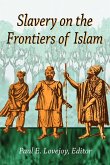This book examines the history of slavery in Minas Gerais, the largest slave-holding region in Brazil.
This book examines the demographic and economic history of slavery in Minas Gerais, the single largest slave-holding region in Brazil, from its settlement in the early eighteenth century until the abolition of Brazilian slavery in 1888. It utilizes the largest database ever assembled on a slave population in the Americas to reconstruct and analyse the unique history of slave labour in Minas Gerais. This slave population was remarkable in its ability to diversify economically as well as in increasing through natural reproduction, rather than through importation via the trans-atlantic slave trade. Minas Gerais therefore invites comparison with the patterns of slave reproduction found in the United States' South, heretofore considered unique. Extensively researched and finely documented, this book places the history of a unique Brazilian slave community into comparative perspective.
Review quote:
"...Bergad not only has constructed the first time-series set of empirical data, but he employs it to analyze the nature of slavery in Minas in the context of the historical debate."
Robert M. Levine, History
"[This book] analyzes the demographic and economic development of slavery in Minas Gerais, Brazil, based on information from more than 10,000 property inventories of the estates of the recently deceased, which were assessed for the purposes of division among heirs."
Journal of Economic Literature
"If some of Dr. Bergad's principal arguments are, in sum, debatable, this conclusion should not deny this book a wide appreciation for the valuable insights it offers and systematic data it contains."
Luso-Brazilian Review
"Dr. Bergad's study makes a sucessful attempt at understanding the history of Minas Gerais during the eighteenth and nineteenth centuries by way of its economic and demographic history."
South Eastern Latin Americanist vol xliv #3
"This is an ambitious volume focusing on the largest of Brazil's eighteenth and nineteenth-century regional slave system...the book has two important merits: it makes recent findings on a major slave economy available in a well-written English text; and it emphasizes the importance of market forces in determining historical tendencies...Bergad has undoubtedly made a substantial contribution to our understanding of price fluctuations and of age and gender distributions."
American Historical Review Feb 2002
Table of contents:
List of illustrations; List of tables; Preface; Acknowledgments; Maps; 1. The mining-driven economy and its demise: from settlement to 1808; 2. Economic transformations, 1808-1888; 3. Demographic rhythms from settlement to the census of 1872; 4. Demographic aspects of slavery, 1720-1888; 5. Economic aspects of slavery, 1720-1888; 6. Conclusions; Appendixes; Glossary; Bibliography; Index.
This book examines the demographic and economic history of slavery in Minas Gerais, the single largest slave-holding region in Brazil, from its settlement in the early eighteenth century until the abolition of Brazilian slavery in 1888. It utilizes the largest database ever assembled on a slave population in the Americas to reconstruct and analyse the unique history of slave labour in Minas Gerais. This slave population was remarkable in its ability to diversify economically as well as in increasing through natural reproduction, rather than through importation via the trans-atlantic slave trade. Minas Gerais therefore invites comparison with the patterns of slave reproduction found in the United States' South, heretofore considered unique. Extensively researched and finely documented, this book places the history of a unique Brazilian slave community into comparative perspective.
Review quote:
"...Bergad not only has constructed the first time-series set of empirical data, but he employs it to analyze the nature of slavery in Minas in the context of the historical debate."
Robert M. Levine, History
"[This book] analyzes the demographic and economic development of slavery in Minas Gerais, Brazil, based on information from more than 10,000 property inventories of the estates of the recently deceased, which were assessed for the purposes of division among heirs."
Journal of Economic Literature
"If some of Dr. Bergad's principal arguments are, in sum, debatable, this conclusion should not deny this book a wide appreciation for the valuable insights it offers and systematic data it contains."
Luso-Brazilian Review
"Dr. Bergad's study makes a sucessful attempt at understanding the history of Minas Gerais during the eighteenth and nineteenth centuries by way of its economic and demographic history."
South Eastern Latin Americanist vol xliv #3
"This is an ambitious volume focusing on the largest of Brazil's eighteenth and nineteenth-century regional slave system...the book has two important merits: it makes recent findings on a major slave economy available in a well-written English text; and it emphasizes the importance of market forces in determining historical tendencies...Bergad has undoubtedly made a substantial contribution to our understanding of price fluctuations and of age and gender distributions."
American Historical Review Feb 2002
Table of contents:
List of illustrations; List of tables; Preface; Acknowledgments; Maps; 1. The mining-driven economy and its demise: from settlement to 1808; 2. Economic transformations, 1808-1888; 3. Demographic rhythms from settlement to the census of 1872; 4. Demographic aspects of slavery, 1720-1888; 5. Economic aspects of slavery, 1720-1888; 6. Conclusions; Appendixes; Glossary; Bibliography; Index.








